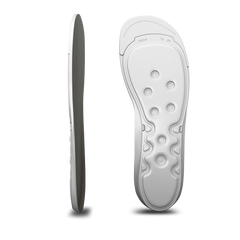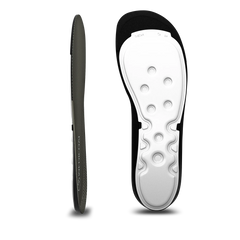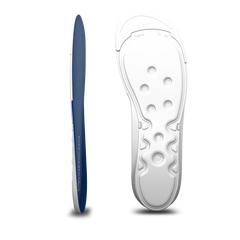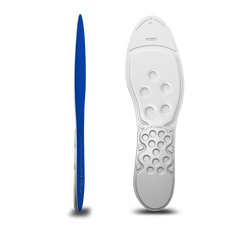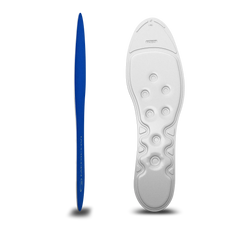Are you experiencing calf muscle pain?

Are you experiencing calf muscle pain? The causes can vary from common muscle strain to more serious health issues.
Causes
One common cause of pain is muscle fatigue from intense exercise or prolonged standing. Intense exercise can lead to microtears in muscle fibers, causing pain and stiffness. Prolonged standing strains calf muscles as they support body weight, and over time it can lead to overuse and pain. In both cases, adequate rest, hydration, and proper muscle recovery are key to preventing long-term damage and effective muscle fiber repair.
Other possible causes of calf muscle pain include insufficient hydration, mineral deficiencies, and blood circulation problems. Inadequate hydration can impair muscle function and recovery, leading to tension and pain. Lack of minerals like potassium and magnesium can cause cramps and muscle weakness. Circulatory issues, such as deep vein thrombosis, are more serious and can cause pain due to a reduction in the blood and oxygen flowing to your muscles.
Muscle inflammation is another common condition related to calf muscle pain. Inflammation can occur due to excessive physical exertion, injury, or autoimmune diseases. It can cause pain, swelling, redness, and limited movement in inflamed areas.
Prevention
Preventing calf muscle pain involves several key practices:
Adequate hydration ensures muscles are well-supplied with water and function efficiently. Proper nutrition, rich in vitamins and minerals, is essential for maintaining muscle health and strength. Regular and proper stretching, especially after physical activity, helps prevent muscle tension and fatigue. Gradually increasing the intensity of exercise will help avoid overloading your muscles. Paying attention when your body signals something off and seeking professional help at the first signs of pain or discomfort can minimize the risk of calf muscle problems and ensure better overall conditioning.
Treatment
Treating calf muscle pain involves several approaches, from resting to help muscles recover to applying heat or cold to reduce pain and inflammation. Massaging and stretching improve blood circulation and relieve muscle tension. If these methods are insufficient, it's important that you seek medical attention. Orthopedic insoles like Medicovi A40, which support proper posture and weight distribution, can help prevent and treat muscle pain. But you must always consult a specialist to ensure a proper diagnosis and treatment plan.
Effective exercises for calf muscle pain include:
Calf muscle stretching is a simple but effective exercise. Stand facing a wall at about a step's distance. Place one foot in front with a bent knee, and keep the other foot straight behind, heel firmly on the floor. Lean into the wall with your hands and slowly shift your weight to your front foot while keeping your back leg straight and your heel on the floor. Feel the stretch in the calf muscle of the back leg. Hold for 15-30 seconds. Repeat with the other leg. This exercise is ideal for relieving tension and improving calf muscle flexibility.
Toe raises: Stand straight with your back and head aligned. Slowly lift your heels off the floor to stand on your toes, reaching as high as possible without bending your knees. Hold this position for a few seconds, feeling the tension in your calves. Then slowly return to standing on your full feet. Repeat this movement several times. This exercise helps improve stability, balance, and blood circulation in the lower limbs.

Calf massage: You can use a massage roller or your hands to massage and relax tense calf muscles. A good self-massage of the calves can be an effective way to relieve tense muscles and alleviate pain. One way to do this is by using a massage roller or your own hands. Begin by preparing a space for the massage. Sit on a comfortable surface where you have enough room to manipulate your calves. A slightly cushioned chair is ideal. A massage roller is a cylindrical tool, often made of plastic or foam. If you don't have one, you can use your hands. Place the roller on your calf (or use your hands), so that it is evenly distributed. Start from the lower part of the calves and slowly move up towards your knees. Gently apply pressure and watch your body's response. As you move up and down, your muscles are being massaged. You can use circular motions or linear movements but try not to overdo it. Adjust the intensity of the massage to your needs. If you encounter areas of greater tension or pain, remain longer on these spots as they need more attention. Try relieving the tension with slow circular motions. Gradually start massaging your entire calf before switching over to the other calf. Repeat this massage several times until you notice your muscles feeling more relaxed or with less muscle tension. After completing the massage, take time to rest. A light cooling or anti-inflammatory balm can be applied if needed. A good calf massage can be a pleasant and effective way to alleviate muscle pain and tension. However, if the pain persists or worsens, it is advisable to consult a doctor or physiotherapist to determine the cause and to recommend a more appropriate treatment.
Foot flexion and extension: Sit down and stretch your legs in front of you. Slowly bend and stretch your feet to work the calf muscles. Perform this exercise as follows: Sit on a flat surface and stretch your legs out in front of you. Make sure that your back is straight. Slowly bend your feet up towards yourself, feeling your calf muscles stretch. Then stretch your feet down away from yourself. Move your feet in both directions slowly and in a controlled manner. Repeat this movement several times. This exercise affects the calf muscles, helping to increase their flexibility and strength.
Conclusion
Calf muscle pain can be caused by any number of issues, from common overstrain to more serious health problems. It's important to identify the cause of the pain and adopt appropriate measures for prevention and treatment. Key elements of prevention include adequate hydration, proper nutrition, regular stretching of muscles, and to gradually increase the intensity of any exercise. For calf muscle pain, it's important to use a variety of treatment approaches, including rest, heat or cold, massage, and stretching. Orthopedic insoles like Medicovi Sport 100 can also help support proper posture and weight distribution. To relieve and strengthen calf muscles, you can do several exercises, including calf muscle stretches, toe raises, calf massages, and foot flexion and extension. These exercises can help relax tense muscles and alleviate pain. If pain persists or worsens, it is always advisable to consult with a doctor or physiotherapist to determine the cause and recommend a more suitable treatment. Following these tips and having a timely response to pain can lead to better health and comfort.
